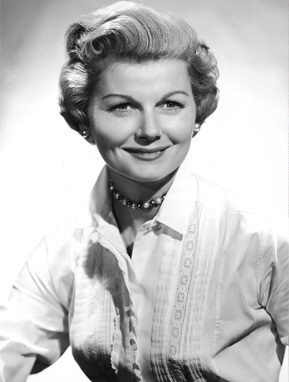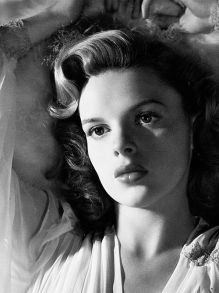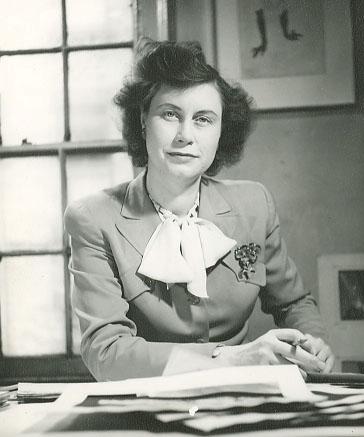BARBARA BILLINGSLEY
DECEMBER 22, 1915-OCTOBER 16, 2010

WORK: Actress, model
SPOUSES: Glenn Billingsley (m. 1941; div. 1947), Roy Kelino (m. 1953; died 1956), William Mortensen (m. 1959; died 1981)
CHILDREN: Drew Billingsley, Glenn Billingsley
Hi ho, folks! I’m feeling a little nostalgic and also a little controversial, and I have been very intrigued by the lasting effect of “Leave it to Beaver” in it’s portrayal of stay at home moms. It’s actually astounding, the fact that a wholesome family sitcom that lasted about five years has affected generations of families (for better or worse, but more on that later). So today I want to talk about Barbara Billingsley, the lovely lady that played June Cleaver and became her caretaker.
Barbara was born Barbara Lillian Combes in Los Angeles in 1915, the youngest of two girls to a police officer and his wife. Her parents divorced when she was about four, and her mother went to work as a foreman in a knitting mill (literally never thought I would ever have to type the words knitting mill).
While still in her first year of college, the musical revue “Straw Hat” that she was in gained enough attention to be brought to New York for a Broadway run. The run was rather short, five performances to be exact, but Barbara decided to stay in New York, finding work as a fashion model. She married her first husband, Glenn Billingsley, in 1941 and took his last name. In 1945 she was offered a contract at MGM, and she and her husband made the move back to her hometown of Los Angeles. The film industry proved to be disappointing, and she mainly played small roles that largely went uncredited. She stuck it out, though, and by the mid 1950s she had graduated to supporting roles in films and, most importantly, made the transition to television appearances. From 1955-57 she had guest starring roles on over half a dozen network sitcoms. 1957 also saw her make her debut in the role that would define her career, and Americana, as June Cleaver in “Leave it to Beaver.” (Pardon the synopsis, I have to educate the children) The show featured Barbara as June, the picturesque American housewife who, with her businessman husband Ward, is raising two boys. Throughout the series the boys, mainly Theodore “Beaver” (so called because of his front teeth), cause trouble and get into sticky situations, and June is usually the one to help them work it out. Through her wisdom, grace, and dignity, the boys always sort things out. Of her character she would say later in life, “Some people think she was weakish, but I don’t. She was the love in that family. She set a good example for what a wife could be. I had two boys at home when I did the show. I think the character became kind of like me and vice versa. I’ve never known where one started and where one stopped.”
After the sitcom ended in 1963, Barbara quickly found herself typecast as a sickly sweet housewife, and she semi-retired from acting in the 1970s. In 1980 her career was revived in the comedy “Airplane!” In the film she spoofs herself as a typical, sweet housewife who just so happens to “speak jive.” Throughout the remainder of the decade she appeared as a guest on sitcoms and the revival of “Leave it to Beaver,” which ran for four seasons. She would continue acting throughout the 1990s and early 2000s, officially retiring in 2003.
Barbara died at 94 from polymyalgia, having lived out the rest of her life happily surrounded by family.
HIGHLIGHTS AND LITTLE KNOWN FACTS:
1. Barbara often questioned her character’s reactions to the Cleaver children’s misbehavior, basing her concern on personal experience as the mother of two sons. As the co-producer Joseph Connelly explained, “In scenes where she’s mad at the boys, she’s always coming over to us with the script and objecting. ‘I don’t see why June is so mad over what Beaver’s done. I certainly wouldn’t be.’ As a result, many of Beaver’s crimes have been rewritten into something really heinous like lying about them, in order to give his mother a strong motive for blowing her lady-like stack.
2. Jerry Mathers, who played young Beaver, adored and idolized Barbara, stating later that she was a role model for him and the rest of the cast.
3. Barbara’s only regret about “Leave it to Beaver” was the fact that in 1950s television contracts residual payments end after six reruns.
WHY HER LEGACY MATTERS:
Barbara’s portrayal of the picture perfect housewife is synonymous with that of 1950s culture. She became the spokesperson, role model, and poster child for housewives and mothers all over the country and, for better or worse, defined a generation of parents. The reason we think of housewives of the 1950s staying home and vacuuming in pearls and high heels is because that is what June Cleaver did. Incidentally, the pearls were Barbara’s trademark look because she had what she described as a “hollow” in her neck, so she asked that they be used in the show. Additionally, the high heels were to make her look taller than the quickly growing boys playing her sons.
We know, of course, that any picture perfect, sanitized version of Americana is too good to be true and very likely never actually existed; but that doesn’t make it any less important. For years mothers strived to emulate June, her patience and her grace and yes, even her pearls. Heck, the reason older women have back issues is probably due to the amount of work they did in high heels. But despite any non-realistic portrayals of life, Barbara did give us something very real and tangible: the picture of a loving mother. A mother who took the time to teach her kids right from wrong, and never pretended that grown ups were perfect. She became the new Virgin Mary, a woman who was “all women,” or all housewives anyway. Her image was perfect, but she had problems and struggles of her own. And as for the show’s portrayal of June and Ward, she said later, “We were the ideal parents because that’s the way (Wally and Beaver) saw it.”
Barbara took her role as an unlikely icon in stride, but she also never disrespected or made fun of the image she created. She never accepted a project if it made fun of June, saying “She’s been too good to me to play anything like that.”
“June Cleaver didn’t keep her house in perfect order, the prop man did it.”
-BARBARA BILLINGSLEY



